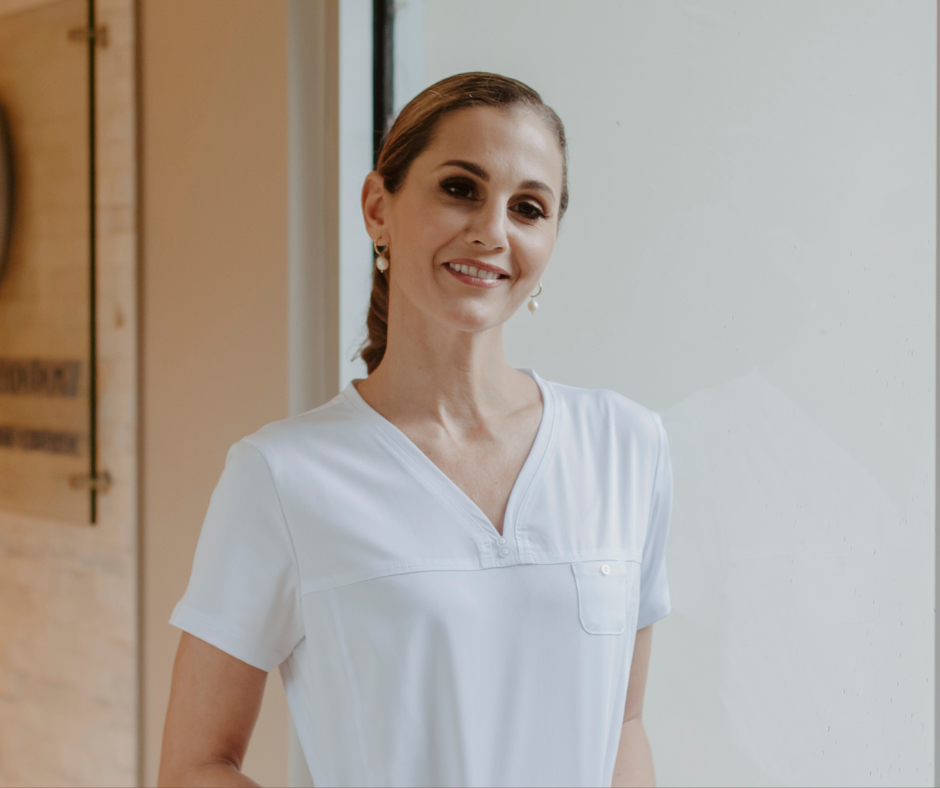COULD THERE ACTUALLY BE A PEEL FOR PERFECT SKIN?
Janine Mendes-Franco
Perfect Derma comes pretty close
The Perfect Derma™ Peel is a medium-depth medical-grade chemical peel that’s becoming extremely popular thanks to its potent blend of exfoliants and antioxidants. Here’s why…
What’s in it
Ingredients like trichloroacetic acid (TCA), which helps remove dead skin cells and stimulate collagen production, is super-effective at addressing acne scars, fine lines, and uneven skin tone. Retinoic, salicylic and kojic acids are age-defiers, acne-fighters and skin brighteners, while phenol is a deep skin rejuvenator. Together, they work to remove the uppermost layer of damaged skin. Meanwhile, antioxidants like glutathione and vitamin C are designed for deeper resurfacing and brightening.
By combining multiple skin-rejuvenating ingredients in one treatment, Perfect Derma gets you clearer, more youthful looking skin that also addresses acne and hyperpigmentation concerns. Best of all, it is safe and effective for all skin types. This is great news for people with darker skin, for whom scarring and hyperpigmentation have been traditionally more challenging to treat.
Benefits
Evens skin tone
Diminishes dark spots, melasma, and sun damage
Softens fine lines and wrinkles
Refines pores
Boosts collagen
Addresses acne and scarring
Delivered with little pain and fast results—visible peeling usually starts by Day 3 and is complete by Day 7
What to expect
In terms of the treatment process and downtime, here’s what you should know:
In-clinic application — Takes about 15 minutes. You will experience mild tingling and perhaps even a numbing effect.
Peeling phase — This begins around Day 3, and can last anywhere between two and five days.
Visible improvements —You should begin to see a marked difference in your skin’s appearance in about a week. Your skin will feel smoother and brighter.
Recommended course — For best results, you should have anywhere from two to four treatments, spaced four to six weeks apart, with maintenance every three to six months.
Who should try it
Most people who do the treatment say their skin looks and feels very smooth, and any discolouration issues they were battling vanished. It’s an excellent treatment option for people who want to:
Minimise hyperpigmentation issues
Improve their skin’s texture
Deal with acne scarring issues
Minimise signs of premature ageing
Important precautions
Of course, there are exceptions to every rule, so you should steer clear of this treatment if:
You are pregnant or breastfeeding
You have used medications containing isotretinoin, a type of retinoid that treats severe acne within the last three months
If you do opt for the peel, you must take the following precautions to avoid any complications:
Strict sun protection post-treatment is vital
The use of soothing moisturisers and SPF
Heavier barrier support (e.g. Vaseline or aloe vera) in instances of extreme dryness
The Perfect Derma™ Peel offers strong, noticeable results — brightening, smoother texture, and reduced hyperpigmentation — with moderate downtime. While this can be transformative, the process requires careful aftercare, which may involve some discomfort and skin purging, and a proper post-peel routine is of the utmost importance. If you’d like to find out more about what’s involved, just give us a call at (868) 622-7340.
























